How to Find Duplicate Files in Windows 10 Using CMD or an Easier Way
 3.9K
3.9K
 3
3
If, unfortunately, you have a lot of duplicate files on your Windows PC, you can delete them. Unnecessary duplicate files waste space and can make file management harder. Windows doesn’t have a feature to directly find and remove them. But Windows’ CMD can help users with this task. This article mainly talks about how to find duplicate files in Windows 10 using CMD successfully.
 Cisdem Duplicate Finder
Cisdem Duplicate Finder
The Best App to Remove Duplicate Files in Windows
- Find duplicate pictures, audios, videos, documents and all other duplicate files
- Identify duplicate files by content, regardless of filename
- Find duplicate files on PC, external hard drive, SD card, etc.
- Find duplicate files in a folder/drive or across multiple folders/drives
- Display the found duplicate files for you to preview, sort and examine
- Automatically select duplicates for you to mass delete with a click
- Also offer selection rules to customize the selection
- Offer 3 deletion options: Move to Recycle Bin, Move to Folder and Remove Permanently
- Easy to use and customize
- Reliable and safe to use
- Available for Windows, Mac, Android and iOS
 Free Download Windows 10 or later
Free Download Windows 10 or later  Free Download macOS 10.11 or later
Free Download macOS 10.11 or later
How to find duplicate files in Windows 10 using CMD successfully
Windows’ Command Prompt (people often call it CMD) is a command shell. It's an app that allows users to directly "talk to" the operating system. With it, users can use commands to do many tasks, such as finding duplicate files.
The steps below will show you how to successfully find duplicate files in Windows 10 and Windows 11 using CMD.
1. On your Windows computer, type CMD in the search box on the taskbar.
2. Run CMD as administrator.
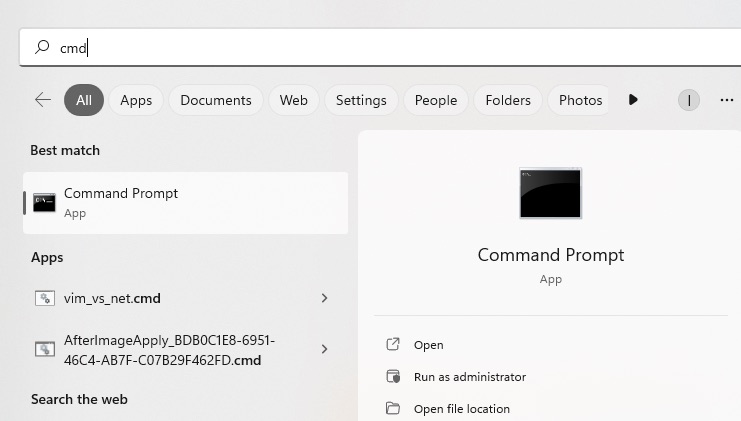
3. Use the “dir /s /b *.extension” command to find files with a specific extension.
- The “dir” is the command used to display files and subfolders in a directory.
- The “/s” is an option that recursively searches all subdirectories, including the current directory and all subdirectories under it.
- The “/b” is used to list the full path of the file in a concise manner.
- The “*.extension” is a wildcard expression that specifies the file extensions to search for.
Here you need to replace "extension" with the file extension you're looking for.
For example, if you want to find all duplicate jpeg files, you can enter “dir /s /b *.jpeg”.
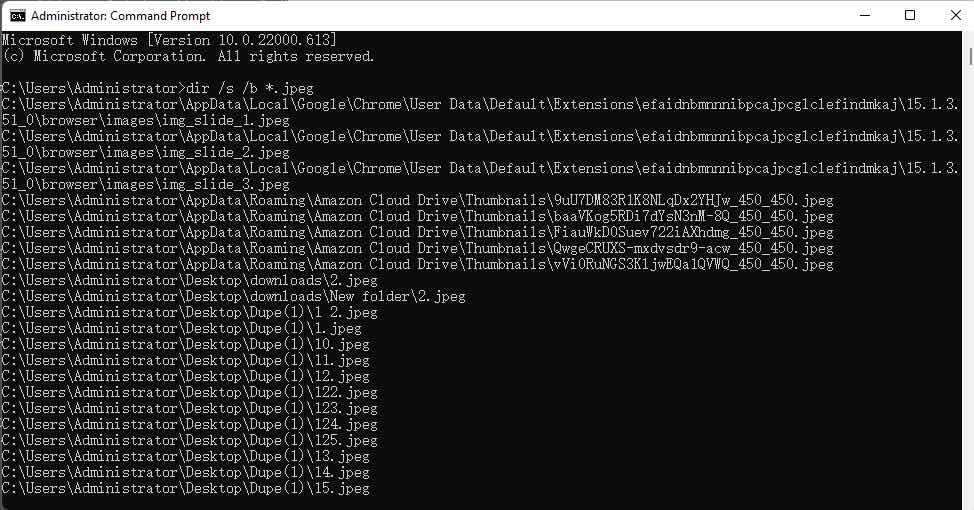
4. Press Enter. A list of the full paths of duplicate files will be displayed. You can check these files to confirm that they are duplicates.
Note: These commands can only list the path of the duplicate files, but do not allow you to preview the found duplicate files directly. What’s more, you can only search a type of duplicates at a time.
How to delete duplicate files in Windows 10 using CMD
After you get the duplicate files found by CMD, you can manually delete duplicate files. For each group of duplicate files, use a file’s path to locate it in File Explore, and delete the file if you don’t need it anymore. Keep one file in each group and delete the rest.
If you want, you can also use commands to automatically remove duplicate files by entering the following commands:
del /s /f *.extension
Replace "extension" with the file extension that you want to delete.
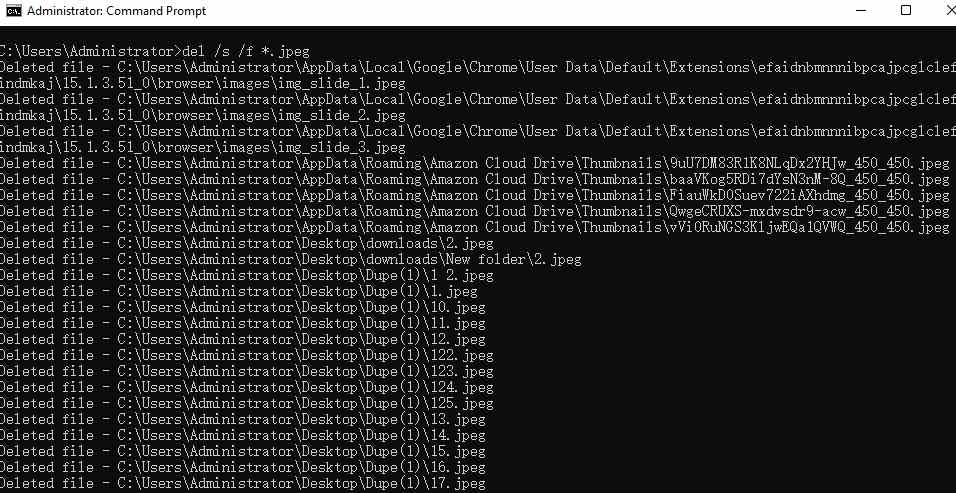
Note: Using these commands doesn’t allow you to decide which files to delete and will remove duplicate files by deleting them permanently, which can be a bit risky.
How to get rid of duplicate files in the easiest way
Compared to using CMD, there is an easier method, which provides the following benefits.
- Automatically find duplicate files
- Automatically select duplicates for you to mass remove
- Also let you decide which files to remove
- Easy to use for everyone
- Reliable and safe to use
The best way to get rid of duplicate files in Windows is to use duplicate file finder and remover software Cisdem Duplicate Finder. It’s easy to use, powerful and reliable.
Cisdem Duplicate Finder main features:
- Find duplicate photos, videos, audios and all other types of duplicate files
- Detect duplicate files by content, capable of finding duplicate files with different names
- Also find similar photos
- Scan PC and external storage devices for duplicate files
- Scan one or multiple folders/drives for duplicate files at a time
- Let you exclude folders and files from scan
- Display the found duplicate files for you to preview and view
- Automatically select duplicate files for mass removal
- Allow you to decide which files to delete by offering customizable selection rules (such as Select Newest)
- Offer Move to Recycle Bin as the default deletion option (so that files can be recovered)
- Let you control what to find, where to find and how to delete
- Available for Windows 10 and Windows 11
1. Download and install Cisdem Duplicate Finder on your Windows PC. Open it.
2. To scan one or multiple folders for duplicate files, drag it or them into the software. Or, you can add locations by clicking the plus icon.
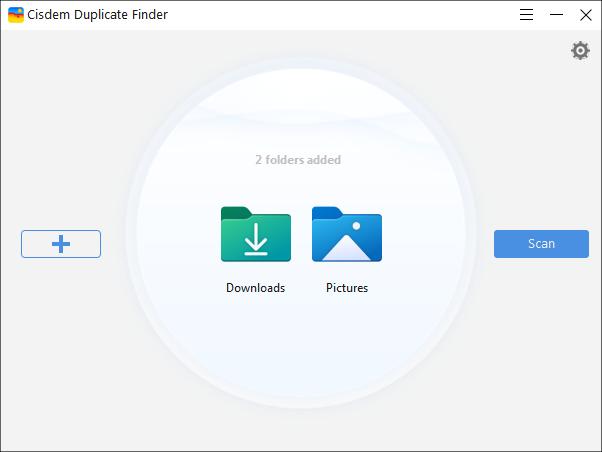
3. Click Scan.
4. Once the scan is done, the All tab will display all the duplicate files that have been found. Sort, preview and view them as you like.
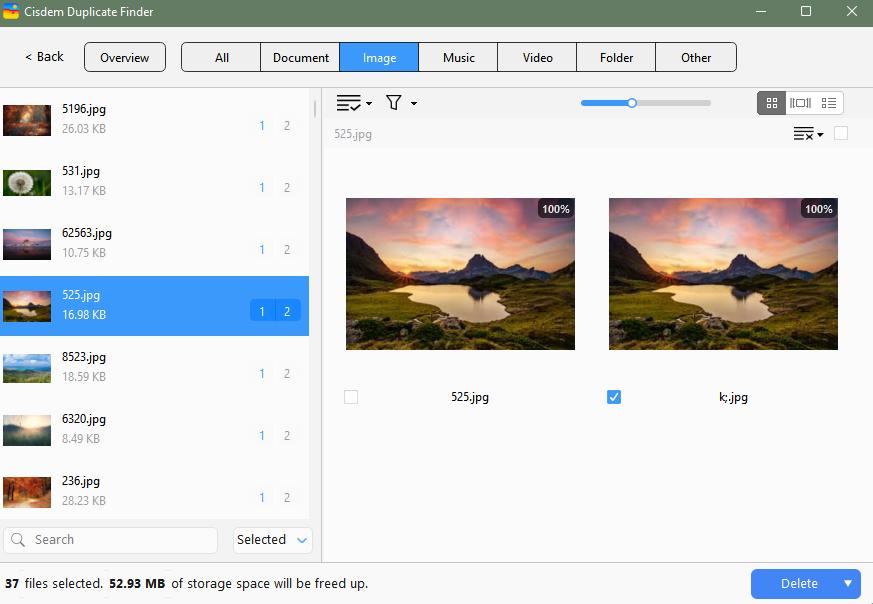
5. The software already automatically selects duplicate files for mass deletion. If you want, you can adjust the selection by choosing a selection rule or by hand.
6. Click Delete in the bottom left corner to clean up the selected unwanted duplicate files on your Windows PC.
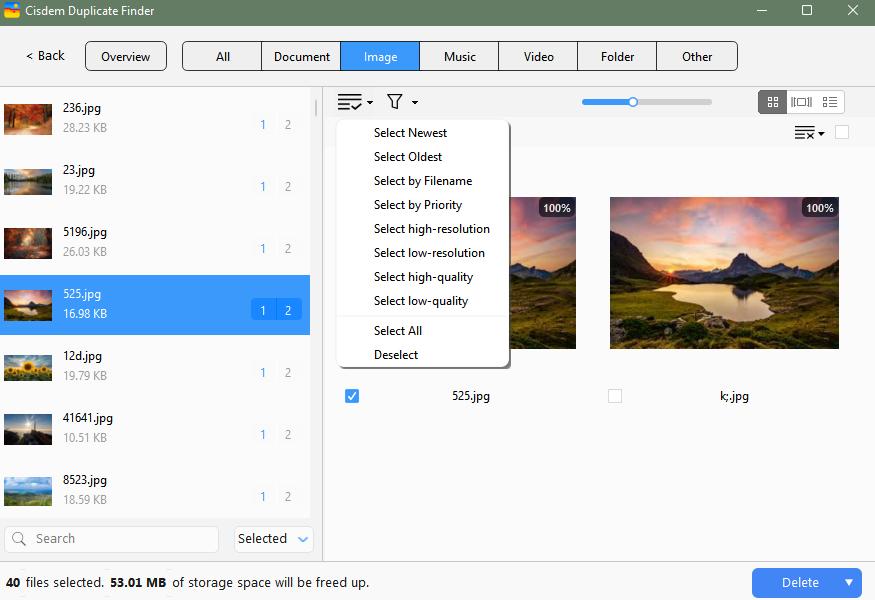
Tip: In step 2, if you feel you want, you can do your customization by going to Settings ![]() . For example, you can ask the software to ignore certain specific folders and files when it is scanning for duplicate files.
. For example, you can ask the software to ignore certain specific folders and files when it is scanning for duplicate files.
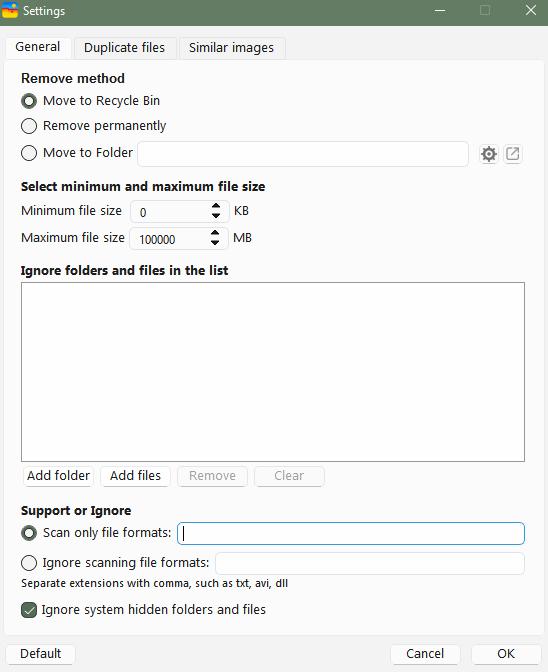
Conclusion
Cleaning duplicate files can help you free up storage space on your computer and help you manage files in a more easy way. And, this article shows you how to find and delete duplicate files in Windows 10 using CMD. If you want to get the job done easily, reliably and efficiently, I think that you can use dedicated software. Get rid of useless duplicates and enjoy a better PC experience. Get rid of useless duplicates and enjoy a better PC experience.

With a passion for tech and writing, Sarah joined Cisdem, where she focuses on creating articles about using utility tools to enhance file management and simplify contact management.

Adrian Li is Cisdem’s Chief Engineer and serves as the editorial advisor for Duplicate Finder and ContactsMate. His work and insights have been featured in leading tech publications such as Fossbytes, TUAW, Redmond Pie, SafetyDetectives, and BestForAndroid.






Karola Beil
Tried the CMD method, but it was a bit too technical for me. I ended up using the tool you recommended. It's much easier.
Bernhard Suchy
Good job and the app seems easy to use. Thanks for your great instructions!
Bernd Sucher
Thank you for writing this useful article. it really found a lot of duplicate files on my pc. now my computer speeds up. thanks!